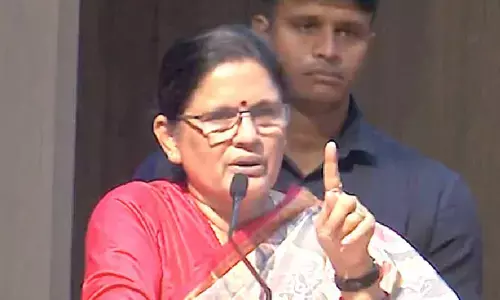Heat wave

With temperatures soaring above 40 degrees Celsius in many parts of Telangana, the IMD has warned of heat wave-like conditions to prevail in all the districts of the state on Tuesday and Wednesday.
With temperatures soaring above 40 degrees Celsius in many parts of Telangana, the IMD has warned of heat wave-like conditions to prevail in all the districts of the state on Tuesday and Wednesday. A heat wave, according to National Disaster Management Authority (NDMA), is a period of abnormally high temperatures, more than the normal maximum temperature that occurs during the summer season in the North-Western parts of India. Heat Waves typically occur between March and June, and in some rare cases even extend till July.
The Indian Meteorological Department (IMD) has given the following criteria for Heat Waves:
Heat Wave need not be considered till maximum temperature of a station reaches at least 40*C for plains and at least 30*C for hilly regions. When normal maximum temperature of a station is less than or equal to 40*C, heat wave departure from normal is 5*C to 6*C.
Severe heat wave departure from normal is 7*C or more When normal maximum temperature of a station is more than 40*C, heat wave departure from normal is 4*C to 5*C, severe heat wave departure from normal is 6*C or more When actual maximum temperature remains 45*C or more irrespective of normal maximum temperature, heat waves should be declared.
Higher daily peak temperatures and longer, more intense heat waves are becomingly increasingly frequent globally due to climate change. India too is feeling increased instances of heat waves which are more intense in nature with each passing year, and have a devastating impact on human health thereby increasing the number of heat wave casualties.
Health impacts
The extreme temperatures and resultant atmospheric conditions adversely affect people living in these regions as they cause physiological stress, sometimes resulting in death. The health impacts of Heat Waves typically involve dehydration, heat cramps, heat exhaustion and/or heat stroke.
The signs and symptoms are as follows: Heat Cramps: Ederna (swelling) and Syncope (Fainting) generally accompanied by fever below 39*C i.e.102*F; Heat Exhaustion: Fatigue, weakness, dizziness, headache, nausea, vomiting, muscle cramps and sweating; and Heat Stoke: Body temperatures of 40*C i.e. 104*F or more along with delirium, seizures or coma. This is a potential fatal condition















